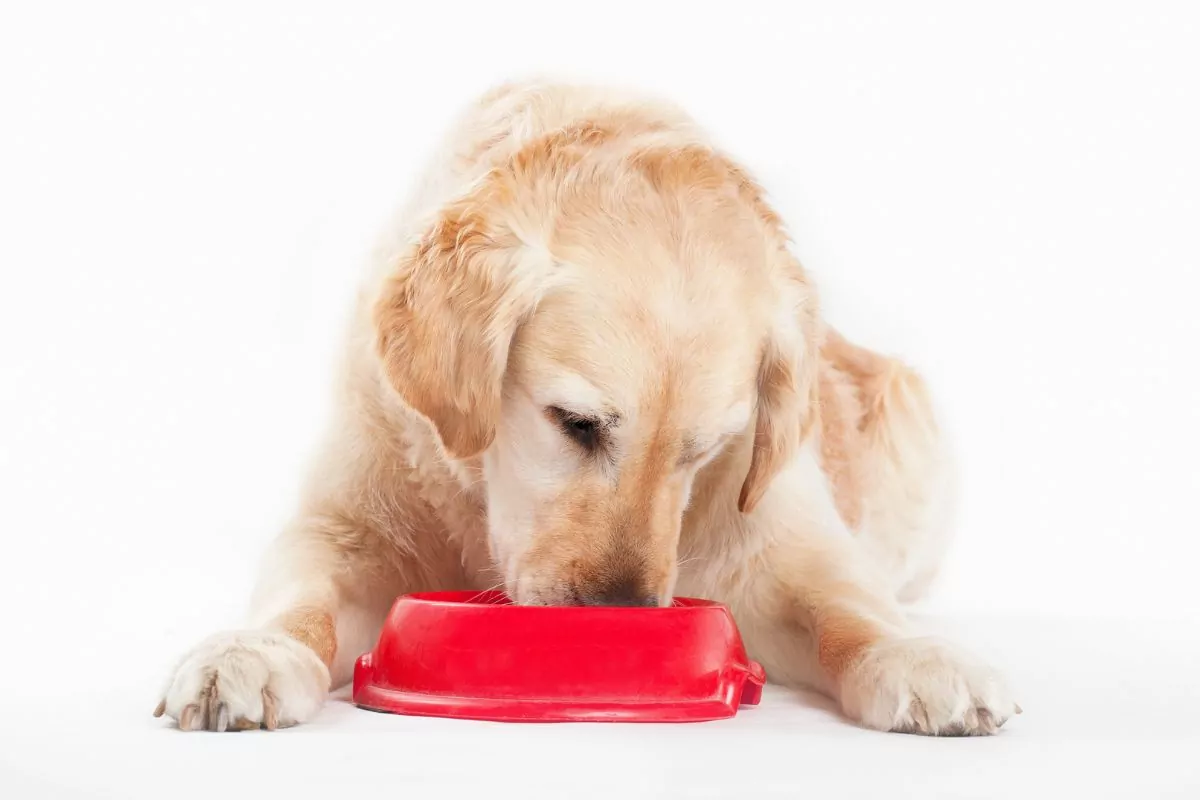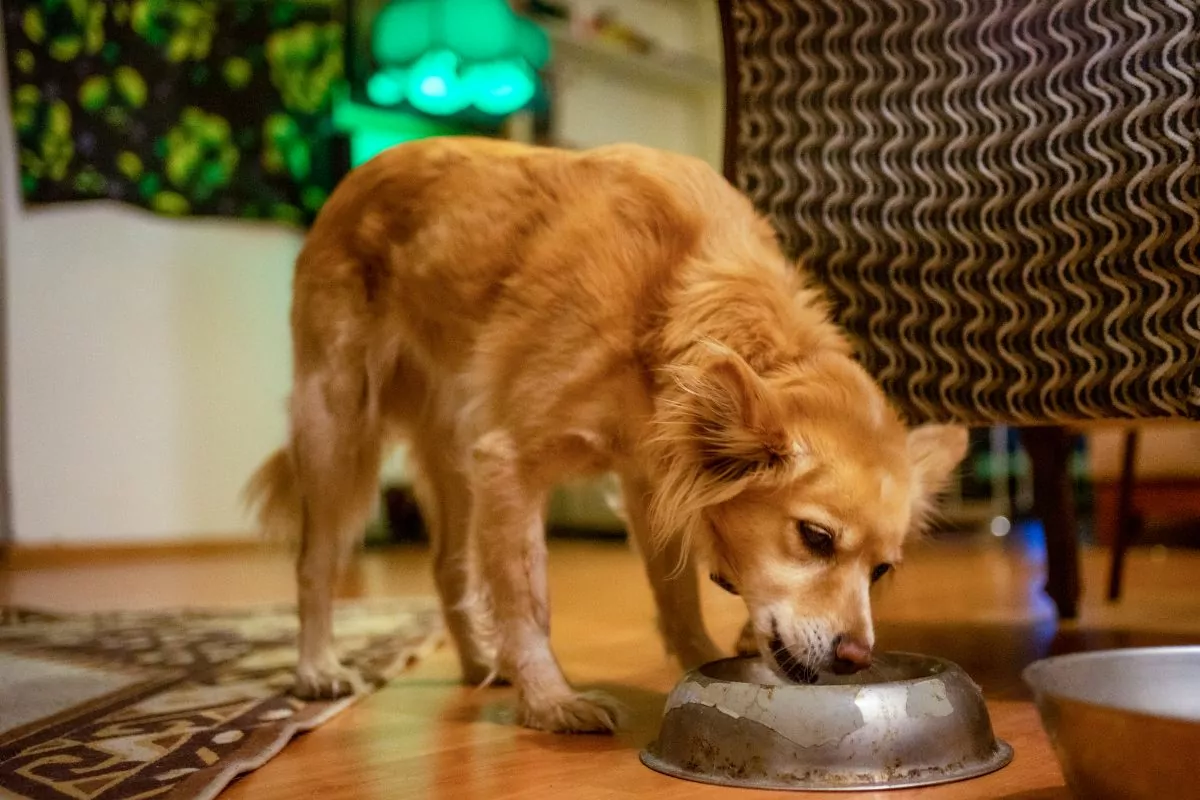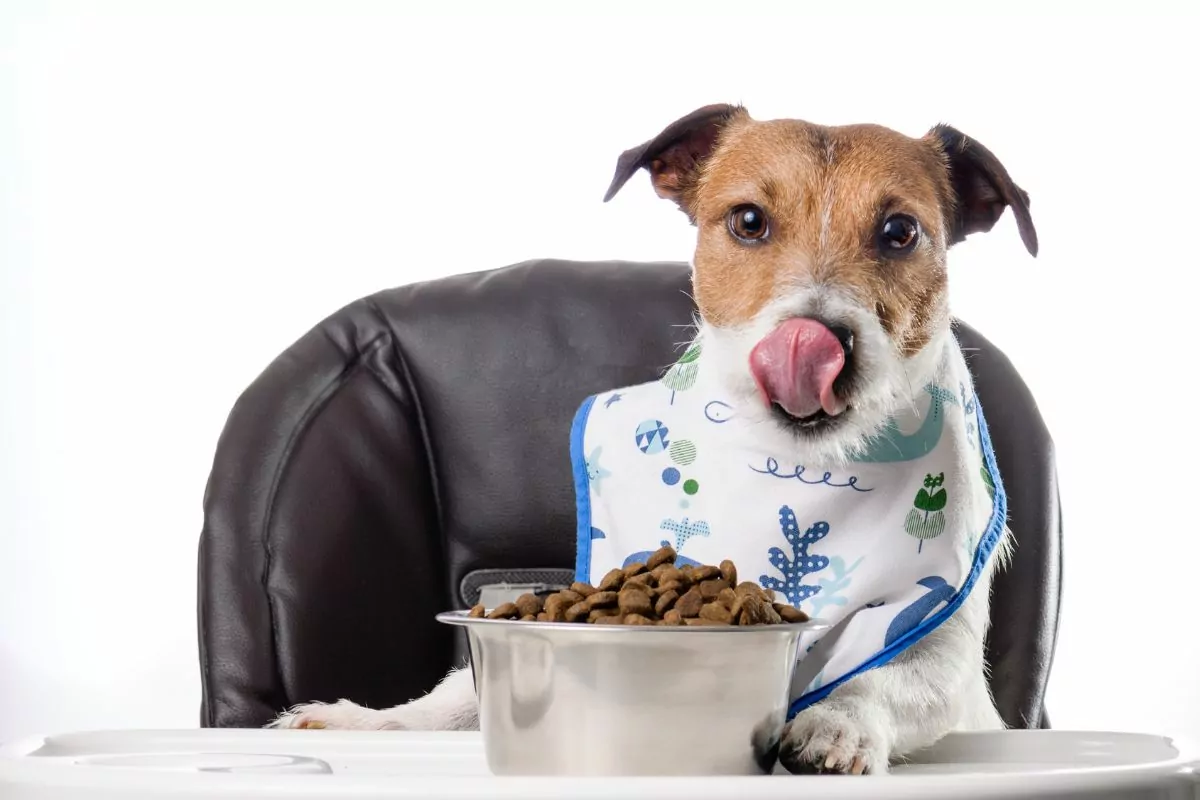How long does it take for dogs to digest food? If you don’t know the answer, continue reading this article. Many think dogs have the same digestive process as humans, but dogs’ digestive system is different. This information is useful to know the approximate digestion time of your dog and establish an exercise routine. It will also help owners estimate when to take them out to relieve themselves.

What is Digestion in Dogs?
Digestion is a very elaborate and complex physiological process. Food turns into simpler substances such as proteins, carbohydrates, and fats so that they can become absorbed. Nutrients serve:
- As a source of energy
- To form and maintain cells
- To feed the cells
For this process to occur, there are two types of digestion:
- Mechanical digestion: Performed by the teeth and the musculature of the digestive tract of a dog. The result of this process is the breaking of the food into pieces.
- Chemical digestion: Gastric juices and digestive, pancreatic, and hepatic enzymes produced during the digestion breaks down food into nutrients.
The Digestive System of a Dog Explained
Dogs tear, shred and swallow food thanks to the 42 teeth of an adult dog or the 28 of a puppy. Did you know that dog digestion does not begin in the mouth? Unlike humans, dogs only use saliva to lubricate food and kill bacteria, according to the latest research (Pasha et al., 2018). Also, they have few taste buds, so they hardly taste food.
It is common for dogs to regurgitate food. Dogs have a strong gag reflex, so they vomit if they have not chewed their food. If this is the case, they chew the food and try again. This ability allows them to ingest large amounts of food.
Once the food reaches the stomach, canines begin digestion, digestive juices and enzymes break it down further. The pH of a dog’s stomach is very acidic. This characteristic is vital to break down proteins and degrade bone tissue.
When the food particles reach a size of about 0.078 inches (2 millimeters), they are ready to pass into the small intestine. The larger the pieces are, the longer they will take to break down and reach the intestine.
The food then passes into the small intestine, mixed with enzymes secreted by the liver, pancreas, and gallbladder. Proteins, carbohydrates, and fats give rise to smaller, simpler nutrients. The interior of the small intestine has intestinal villi that aid in the absorption of vitamins and these nutrients.
Not absorbed substances, such as fiber or undigested food, reach the large intestine. The major absorption of water and electrolytes from food occurs in this part. The unused remains leave the dog’s body in the form of feces.
How Long Does it Take for Dogs to Digest Food?
Generally speaking,
- Your dog’s stomach can take four to 12 hours to empty
- Transit through the small intestine can take from one and a half to four hours
- In the case of the large intestine, transit can take seven to 42 hours
- In total, from when your dog ingests its food until it discards the undigested food in its feces, between 20 and 60 hours may have passed.
As you can see, dog digestive time is variable since it will depend on many factors we will see later.
Roughly speaking, we could estimate that wet food can remain in the canine’s stomach for four to five hours. Yet, a dog’s stomach can work on breaking down dry food for approximately eight to 12 hours before it continues to the small intestine.
Small or young dogs may take about four hours to digest food, while dogs of larger size and age may need up to 12 hours. Thus, on average, you can usually expect dog poop 12 hours after eating.
Knowing a detailed dog’s digestive system and paying attention to your pup is essential because a mismatch in the food-poop time may show something is wrong. Also, knowing how long the food remains in the stomach is of utmost importance to establish your dog’s exercise routines in large and giant breeds, to avoid the so-feared dilatation-torsion of the stomach.
Does Canine Digestion Matter in Terms of Size, Breed, and Lifestage?
Are you surprised by the significant difference in digestion time that dogs can have? It is because there is no estimated digestive time for all dogs, but different factors determine it. Thus, the digestion time of each dog varies depending on:
Age
As the dog ages, its metabolism slows down and, with it, its digestion
Size
A small dog and a big dog digest the same way, but the food travels a longer distance in the big dog, so it takes longer.
Hydration
Water is indispensable for all digestive processes to function and form stool. If the dog’s hydration is not good, the blood to its gastrointestinal tract decreases, slowing down the transit of food. So, the stool will be harder, and the canine may become constipated.
Daily Activity
Bowel motility enhances with physical activity. In the case of sedentary dogs, their digestion time is usually longer, and they tend to become constipated. Yet, dogs should perform physical activities before eating because, after ingestion, they need to rest so that their intestine can digest the food.
If your dog is active after eating, the body takes resources away from the intestine and digestion to dedicate them to irrigating the muscles.
Food Quality and Quantity
The type of food your dog eats can determine how his body breaks it down. Wet foods, such as cans and pates, contain more water. Thus, they promote digestion and speed it up. The food we provide will also vary by increasing or decreasing the hours needed for digestion.
Sudden Diet Changes
If your dog eats something different than usual, it can impact its digestive health. The gut microbiota contains millions of beneficial bacteria that help break down food. A change in diet can interfere with the balance of these microorganisms and lead to severe diarrhea.

The Differences Between Dog and Human Digestion
The digestive process in humans begins in the mouth. People have the enzyme alpha-amylase in their saliva that allows them to start breaking down carbohydrates in the mouth. Also, people chew the same morsel until it breaks down into small pieces, then passes through the esophagus to the stomach.
Finally, they have many taste buds on the tongue, allowing them to taste the food.
Dogs do not begin digestion until the food reaches the stomach because they do not have the enzyme alpha-amylase in their saliva. They chew their food only a little, then swallow it in large pieces.
Unlike humans, the dog digestive system has a very pronounced pharyngeal reflex. It allows them to swallow large pieces of food without chewing and then return them to the mouth to tear and crush them. Another difference is that they have few taste buds, so they do not perceive different tastes well.
Humans and dogs have the storage of intake reversed; dogs contain 70% of their intake in the stomach and only 30% in the intestinal tract. In contrast, humans reverse that construct and hold 30% in the stomach and 70% in the intestinal tract. Food moves through the stomach slower in dogs than in humans but faster through the intestines.
These differences between the two species make sense when we remember that the dog is a direct wolf descendant. The wolf pack, after hunting prey, divides the banquet. Each wolf leaves with a large piece of meat that it swallows without chewing, hides in a solitary place, regurgitates its food, and begins to digest it.
Thus, the stomach of canines must be large to receive abundant portions, and they produce almost 100 times more acid than that of a human to break down large amounts of protein and dense bone matter.
Regarding the total length of the intestine, the human intestine is longer, measuring approximately 2.9 feet (9 meters). The small intestine of the canine varies between 5.9 and 15 feet (1.8 and 4.8 meters) in length, and the large intestine is approximately 1.96 feet (0.6 meters).
It is difficult to establish parameters on the total digestion time of the food since, as we have seen above, it depends on several factors. But, in general terms, we could assume that a dog’s digestion is three times faster than a human’s.
Promoting Good Canine Digestion
As digestion is a complex process involving several body organs, it is logical to think that it will need a significant contribution of energy and oxygen. We will give you important tips that will serve as a guide to help promote the proper digestion of your dog:
- Always eat after physical exercise: You should wait at least two hours before taking your dog for a walk or, even better, take him for a walk and feed him. Physical activity reduces the irrigation to the digestive system and can promote so-feared dilatation and gastric torsion
- Divide the food ration: This strategy reduces the canine’s hunger cravings and avoids overloading the stomach.
- Let them rest after eating: A good nap will help your friend focus all his energy on digesting the food.
- Avoid stressful situations after eating: During baths, thunderstorms, fireworks, or stressful situations; the body only irrigates the indispensable organs for life (heart, lungs, and brain). The hypotension of the digestive system is the consequence.
The Importance of Optimal Digestion in Dogs
The coordination and proper functioning of all organs involved in the digestive processes is the only way to ensure that the body receives all nutrients.
The result of a dog whose digestive system does not process the food well is poor digestion and malnutrition. Another vital function of the digestive system is to intervene in the canine’s immune system, so a failure in the digestive system will also affect your friend’s defenses, predisposing him to infections and diseases.
The “good” bacteria that the intestine has and helps digestion are also a strong intestinal barrier to prevent pathogens from entering the blood. Another function is its role in making vitamin B12.
What Should I Do if I See Undigested Chunks in My Dog’s Poop?
Feces are all undigested food components, plus the remains of the body’s metabolism.
It is crucial to observe the dog’s feces as it can provide us with a lot of information about the dog’s internal environment:
- We may see “green poop” when dogs eat grass, but this happens because dogs do not digest fiber well. If the poop is green, and other symptoms go with this information, we can think of a gallbladder problem
- If the stools are greasy and gray, it may be evidence of bad digestion of fats or pancreatic problems
- If we observe undigested food in the stool, even if the dog seems hungry or has a healthy diet, we may face a malabsorption problem. Generally, we also notice chronic diarrhea, weight loss, and bulky and foul-smelling stools.
Whatever the case, we must turn to our trusted veterinarian to establish the most appropriate treatment for your friend.

The Final Say
We hope this information has been useful for you to know your dog a little more in-depth, and you can install new walks and meal routines that suit both of your needs!
Feeding your dog the right food, with high digestibility and good quality, will help his intestinal health. In this way, you support their digestion and immunity.
References
Pasha, S., Inui, T., Chapple, I., Harris, S., Holcombe, L., & Grant, M. M. (2018). The saliva proteome of dogs: Variations within and between breeds and between species. PROTEOMICS, 18(3-4), 1700293. https://doi.org/10.1002/pmic.201700293
